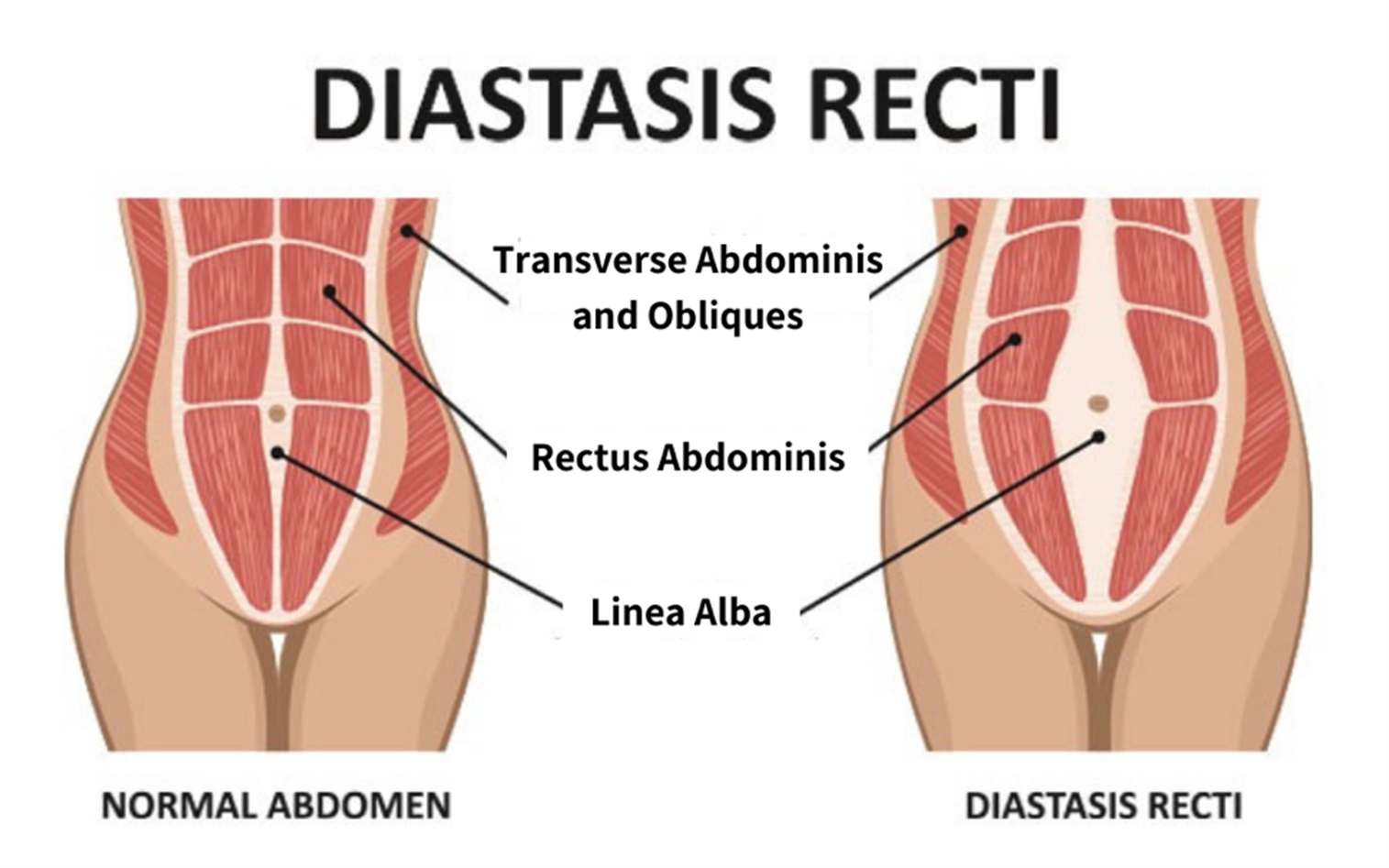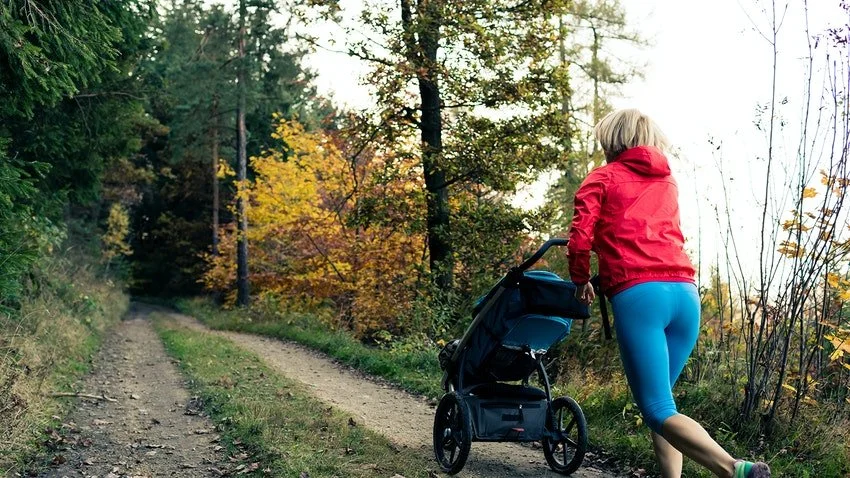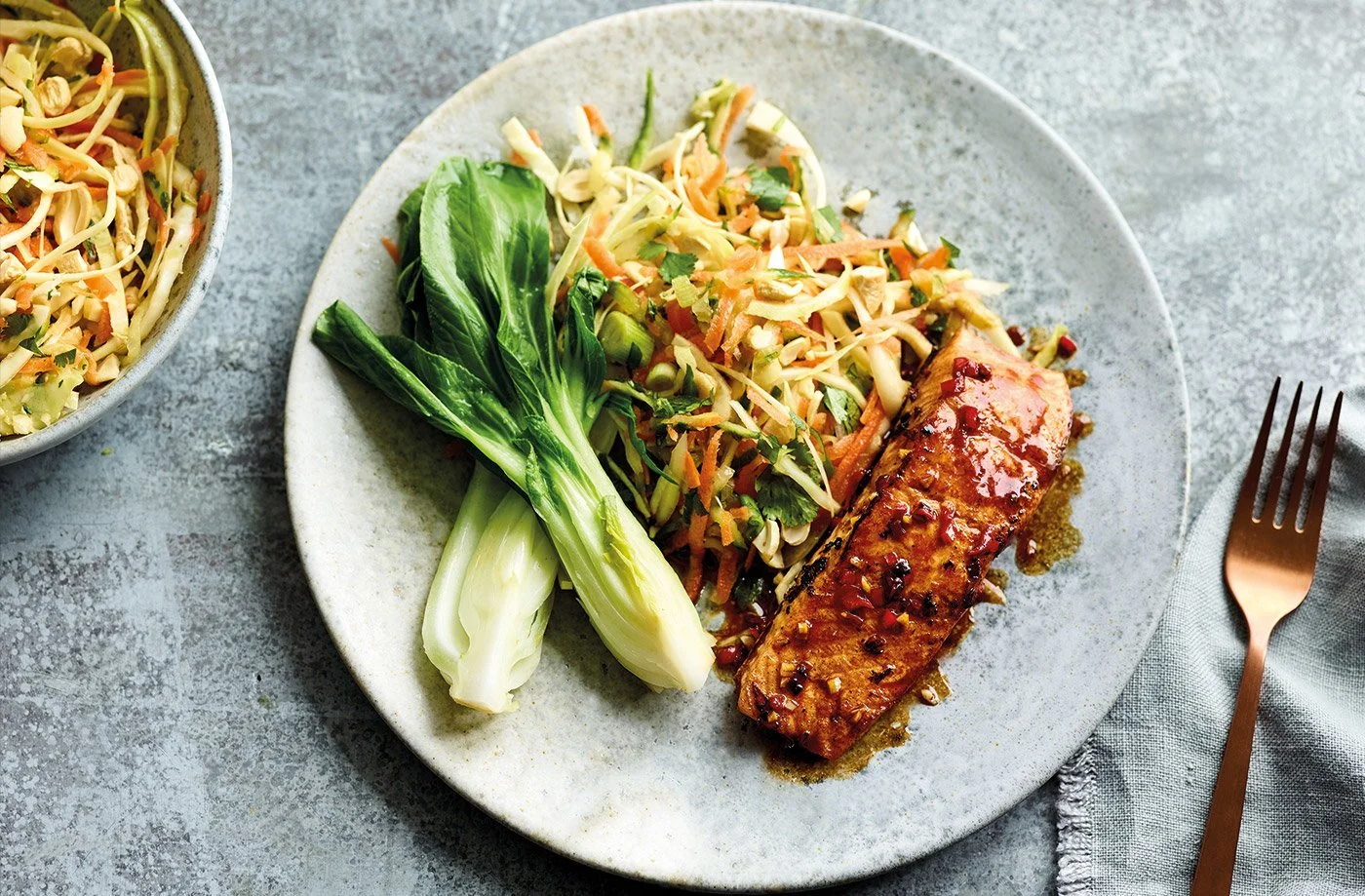How to approach fat loss postpartum
Rebuilding your body begins with rest. Your body needs time to heal and restore itself after all the hard work it has been through! The nine months of pregnancy takes a toll on your body and birth requires a recovery period.
You should wait until your postnatal check-up and you’re given the go ahead from your GP and your women's health physiotherapist that it is safe for you to commence with a workout routine.
This period between delivery and your check ups gives you enough time to rest.
Until your check up:
If you’ve had a vaginal delivery then pelvic tilts and breathing exercises to recruit your deep core muscles can begin a few days after delivery (only without discomfort). For c-section I’d advise waiting 6-8 weeks before starting any gentle core exercises, again only without discomfort.
I advise walking, starting with ten minutes a day for a couple of days after delivery then building up gradually. Mobility work can be performed especially on the lower back, neck and shoulders.
My number one tip:
I strongly advise all women to be seen by a women’s health physiotherapist at around 6 weeks post. This is enough time to give your body an initial healing period.
This examination will be both internal and external of your core, pelvic floor and posture. They will run certain tests to give you an idea of where you are. Not getting this check-up could be a reason as to why you suffer with back pain, incontinence and not losing your “mummy tummy”. You will also be advised of what exercise is safe for you to return to and what exercises you may need to do as rehab, for example if your abdominal separation has not fully closed.
A note on Relaxin:
Relaxin, a hormone which is responsible for relaxing your muscles and ligaments to make room for the growth of your baby and make it easier for your body to expand enough to deliver. All joints will be affected but the pelvis is most at risk, the growing baby makes the pelvic joints particularly vulnerable.
Relaxin still remains in your body for 4-9 months postpartum and longer if you’re breastfeeding.
High impact activities such as HITT and running should be avoided for the first few months to allow for joint stability recovery time. Pressure on the joints is increased with high impact activities, in particular strain on the ankles, knees, pelvis and spine.
Returning to exercise considerations:
Avoid exercises which can cause any heavy downward pressure on the pelvic floor.
Make sure you have your GP’s approval before returning or taking up an exercise plan.
When performing stretches/ flexibility work and weight bearing activity take in mind that Relaxin (the hormone which softens your connective tissues and makes your joints more lax) is still in your body for up to 4-9 months postpartum and longer if you’re breastfeeding.
Avoid running for at least 4-6 months post pregnancy. A strong pelvic floor will help you ease back into running, focus on rebuilding strength before you put on your running trainers.
If you have a case of diastasis recti, please avoid high impact activities, sprinting, jumping etc. You could potentially increase the force and rotation through your trunk muscles which can strain the linea alba.
Avoid twisting, crunching and full body planking exercises, which will only create added pressure to your abdominals.
A functional core is a healthy core
Core breathing
A functioning working core is vital for recovery. If your core isn’t functioning well you could get symptoms such as back pain, digestive issues, prolapse and incontinence.
Performing core breathing will do wonders for engaging your deepest core muscles including your pelvic floor.
It also can be used as an excellent stress reliever!
This exercise can be done on all fours, laid down or seated. Find a position which is most comfortable for you. I'd recommend incorporating this everyday for 5 rounds.
Start in an all fours position.
Let your tummy relax and breathe in gently.
As you breathe out, gently draw in the lower part of your stomach like a corset, narrowing your waistline.
It’s important to be a bit more mindful of your breathing in everyday activities and whilst exercising. Always inhale to prepare and exhale on the effort, when you exhale draw in your stomach (contract your core). For example when performing a squat you will inhale as you lower yourself down and exhale as you come back up.
How to start exercising again:
First of all don’t neglect your pelvic floor along with your other deep core muscles.
If you have any abdominal separation which you will have been made aware of at your physio check up this will need addressing.
Your physio should have given you exercises at the appointment but you can request a copy of my postnatal core guide which goes into depth on diastasis Recti and includes safe core moves.
When you do start exercising again try not to just see it as a way to get weight off. Yes that is a good bit of motivation, but also see it as a way to get strong.
I advise mums who have had vaginal delivery to wait 8 weeks before exercising again and mums who have had a c -section no less than 10 weeks. I don’t mean by 8 weeks you can go to your first HITT class or run with your firmed. The type of exercise matters and you’re best to start off gradually and build up week by week.
If you did weight training throughout pregnancy then gradually build up to weights. Perhaps you may feel comfortable doing your first session with bodyweight exercises - incline push-ups, squats, lunges, glute bridges, core work etc. Trust me even with no weight after a couple of months off you will feel it!
Don’t fear the weights
Your mind may go straight to cardio if your goal is fat loss BUT weight training is really where the magic happens. To get that ‘toned’ appearance and really make great improvements to your body composition then weights are needed. Toned is really just a fancy way of saying muscle building.
When you carry more lean tissue I.e. Muscle. It is metabolically more active than fat tissue, therefore you burn more even when at rest.
When you introduce some resistance back into your routine, just take into remember what I said about relaxin & your joints being more vulnerable.
2 weight training workouts per week is good enough to build some strength gains.
Cardio certainly serves a purpose!
Aerobic exercise is designed to elevate your heart rate and improve the fitness of your heart, lungs, and circulatory system. Aerobic activities can include jogging, walking, swimming, and cycling.
If you’re a keen runner then wait at least 4-6 months post. Depending on your recovery and what your physio advises. (running causes the most impact to your pelvic floor than any other exercise.)
If you’re not a runner but you’re under the impression that you need to run to lose body fat, then this is not the case. Steady state cardio is excellent for fat loss.
Walking is a great form of cardio, it’s low impact and works to relax your mind and body. There’s truth to the saying that you always feel better after a bit of fresh air and a walk.
I’d say with cardio aim for a 30-45 minute walk daily.
Nutrition
The mistake most people make is drastically cutting calories and over exercising. (I’m going to focus on women who aren’t breastfeeding as I have put a section below on breastfeeding considerations.)
With this cut in calories comes a cut in protein intake. Plenty of people just don’t consume enough protein as it is. Without protein your lean body tissue I.e. muscle mass won’t be protected and you're at risk of losing that.
This isn’t good. As I’ve said above, muscle is metabolically more active than fat tissue and it gives us that toned/defined appearance. You’ll then end up with a lower BRM (calories burned daily) and weight gain will become more apparent once you start to eat a little bit more again. So my advice is …
Measuring your caloric needs
When finding the right daily calorie intake for you then you need to workout your BMR (how much your body burns daily by doing nothing) along with your TDEE (total daily energy intake).
The 3 essential macronutrients
Everyone needs: protein, carbohydrates and fat. They are all needed for optimal function and they are critical for exercise and recovery.
Protein
Protein is the dietary superstar, the problem is most of us are not eating enough! People who tend to eat diets which are higher in protein can help fend off obesity, osteoporosis, diabetes and heart disease.
As a woman if your goal is to be active, maintain/build muscle and or lose some weight then protein is a must! It also has major involvement in immunity, bone health, enzymes, sleep, digestion and even ovulation.
Protein takes far more work to digest and it simply burns more calories to process it! It also makes you feel fuller for longer and combats food cravings.
Protein is composed of 20 building blocks of amino acids; of these your body makes 11 and the other 9 you must get from your diet. They are the essential amino acids. 3 of these compose approximately one third of your muscle tissue and they are Leucine, Iso- leucine and valine.
For women who want to take a protein shake, (which is high in the branched chain amino acids, especially leucine, the muscle building amino), it is very beneficial for recovery and helping to build and reserve tissue.
A protein shake of 25-30g within 30- 60 minutes of your post workout, I would advise. But using whey protein completely depends on the person if you are getting enough protein throughout the day then shakes are not a necessity. Just make sure that you have consumed protein 2-3 hours around your workout so you have the amino acids flowing through your system.
Protein comes in 2 forms: complete and incomplete protein.
Complete proteins – eggs, chicken, fish and meat.
Incomplete proteins – nuts, beans, and wholegrains for example, bread.
Some of these foods we eat naturally together which will then combine to become a complete protein.
For example: scrambled eggs and beans on toast or chicken and wholegrain rice.
Protein requirements depend on your age, weight, what exercise you do and if you are dieting or not.
Carbohydrates
When we consume carbohydrates they are broken down into glucose and are used for energy or converted by your liver into the form of glycogen. This glycogen is then stored in your muscles and liver for later use.
Glucose is your body’s main and preferred fuel source. Your brain alone requires “60% of your body’s resting glucose stores.
What you eat day to day has a huge impact on your stored glycogen levels whether you’re a runner, swimmer, weight trainer. It’s important you have enough glycogen on board to enable you to pursue your optimal workout.
Not all carbohydrates are equal. They impact your body in different ways. Think less refined carbohydrates which have been stripped of their nutrients like white bread, sweet desserts, and white pasta. And more complex carbohydrates which provide vitamins, minerals and fibre (which keeps you fuller for longer) such as wholegrain rice, oats, fruit, sweet potatoes and not to forget vegetables.
Carbohydrate requirements are dependent on your goals and lifestyle.
Fats
Fats! We need them and some fats are actually supportive towards fat loss.
We must consume fats to support the functions of our bodies such as protecting our inner organs, supporting your hormonal health, keeping you warm, essential for immune and nerve function. All of which makes them vitally important.
Include plenty of monounsaturated, polyunsaturated fats found in foods like nuts, avocado, oily fish, meat, nuts, olive oil, seeds.
We still need saturated fats too! Coconut oil, meat, butter.
Avoid at all costs anything which has on the label ‘trans fats’. This fat is mostly found in pastries, cakes, cookies etc.
For women I advise to get more dietary fat from omega-3 fatty acids which are natural anti-inflammatories and can help with any cramping you may get with PMS. Omega 3 is found in oily fish such as salmon and mackerel and can also be found in seeds such as flaxseeds.
My fat fat loss tips. Consuming a breakfast which is higher in fats and protein is superior for fat loss than a high carbohydrate breakfast. This might surprise some of you but save your carbs for later in the day.
Everyone is different, one woman may do better from a higher fat to lower carb ratio or a higher carbohydrate to lower fat ratio. The best thing to do is test the waters and see which works best for you, but my advice is to not cut an entire food group out as this puts you at risk from becoming deficient in nutrients, losing muscle mass, negatively impacting your hormonal health therefore possibly disrupting your menstrual cycle.
To track or not to track
Tracking and counting calories certainly serves its purpose and can help people who really struggle with portion sizes etc.
It’s important to know that a calorie is not just a calorie. For example 100 calories from nuts is far different than 100 calories from a can of coke. You won’t absorb all the calories from the nuts due to the fibre but you sure will absorb all the calories from a fizzy drink.
If you’re eating right and you’re simply eating less you most likely will be losing weight.
So if tracking and counting calories isn’t for you for reasons such as, previous bad relationships with food e.g. eating disorders then do what is right for yourself and what will support a good relationship with food.
Breastfeeding
new mums may feel like they want to lose some bodyweight and this is very understandable. If you are breastfeeding and worried about negatively impacting your milk supply then rest assured this is just not the case. You body is very clever and will prioritise your baby over you. The amount of food you eat doesn’t change the amount of milk you produce.
Breastfeeding does use up extra energy, but the amount of calories used will be different for each woman. There isn’t a one size fits all as there are factors which go into it: How much milk produced, genetics, if you’re feeding multiples etc.
If you do want to lose weight then work with someone qualified or if you’re able to then work out your maintenance calories & start eating at that amount (like I said breastfeeding does use up calories) you can then make adjustments from there.
Just don’t place too much pressure on yourself and focus of a healthy diet including carbohydrates, healthy fats and protein. Focus on wholesome foods, ones which are packed with fibre, nutrients and plenty of benefits! Avocados, salmon, eggs, whole grains, veggies and fruits just to name a few.
Improving Skin elasticity
This is one of the concerns many new mums may face when they focus on their appearance. Due to the stretching of the skin especially on the stomach lots of mums end up with reduced skin elasticity and a wrinkled appearance.
But there are things you can do:
Take a collagen supplement -
I recommend one by Edible Health. It comes as a powder and is flavourless, it can easily be mixed into juice or added to your porridge. You’ll also get 10g of protein with each daily serving.
A few of my clients are on this and have seen improvements in their skin elasticity and have helped a couple with postpartum hair loss.
Drink plenty and stay hydrated -
Remember to drink plenty of water! Staying hydrated is an essential to healing and keeping your skin hydrated which improves appearance. Water, herbal teas, and water rich foods found in fruit are a must. Never just wait till your mouth feels dry before you have a drink. Keep some water on you, or glasses filled up around the house.
Eat a nutritious diet with plenty of antioxidants-
What you eat plays a big role in your body’s ability to heal. There are certain foods that will help your recovery greatly and others that will get in your way.
For example, eating clean protein, lots of colourful fibrous vegetables, fruits and good fats, which are found in nuts, salmon and avocado will be beneficial.
Additionally, including anti-inflammatory foods like turmeric, ginger, garlic, and green tea in your diet provides multiple benefits as well.
Eating right not only makes you look and feel better, these foods will ultimately help your body to recover in the early days, months, or years post-birth.
And of course exercise -
Exercise is good for the entire body, there is no doubt about it. If you combine a good balanced diet with exercise, you may find it easier to maintain your body weight or lose body fat if this is needed.
My top tips!
Don’t compare yourself to others. All recoveries are different and some may require extra time.
If you’re following something or someone on social media which isn’t making you feel great then remove them for now.
Don’t drastically cut calories and do excessive exercise.
include protein with every meal along with a variety of fresh fruit & vegetables daily.
Stay hydrated and drink plenty, aim for 2 litres plus daily.
Remember that you’ve done an amazing job bringing a baby into the world. You might not be at your slimmest or fittest BUT your body has just created life. Give it some extra credit! :)


